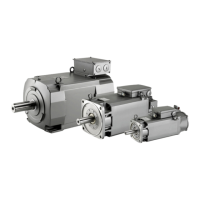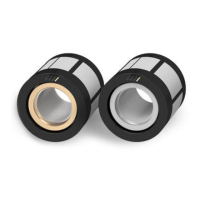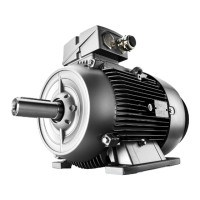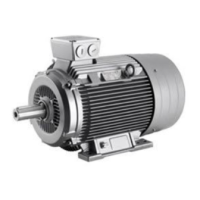0RWRUSRZHU
9ROWDJHOLPLW
6SHHG
&RQVWDQW
SRZHUUDQJH
ILHOGZHDNHQLQJRSHUDWLRQ
Q
UDWHG
Q
3
PD[
3
UDWHG
6
Q
PD[
Q
3
&RQVWDQW
PRPHQW
UDQJH
Figure6-4 Typical speed/power diagram for 1PH8 asynchronous motors
In order that safe, reliable operation is guaranteed even when the line supply voltage
uctuates and the motor parameters vary, a safety margin of at least 10% should always
be maintained to the voltage limit at every operating point depending on the type of supply
voltage of the Motor Module (inverter) and Infeed Module.
Note
For the conguring of main spindle applications for machine tools, the characteristics for the
supply voltage "ALM400 V" include up to two additional ancillary rated points with which
extended eld-weakening operation can be congured. In this case, the range of constant power
starts at the ancillary rated point and ends at the associated point n
2
. The rest of the
characteristic is the same as the S1 characteristic in the diagram.
Asynchronous motors have a high overload capacity in the constant power range. The
theoretical curve of the maximum permissible overload capacity is shown as a limit in the
characteristic diagrams and corresponds to value P
max
.
6.2.4 Selecting synchronous motors
Characteristic curves for synchronous motors
The S1 characteristic (continuous operation) up to rated point for synchronous motors is similar
to the S1 characteristic for asynchronous motors. The S1 characteristic represents the thermally
maximum possible continuous torque that can be produced. The S1 power increases with the
speed depending on the available torque up to approximately the rated speed.
This is followed by an area with reduced power characterized by increasing iron and friction
losses, as well as the increase of negative eld voltage with increasing speed due to the
constant eld of the synchronous rotor.
Conguration
6.2Procedure when engineering
1PH8 SIMOTICS M main motors
210 Conguration Manual, 12/2022, A5E51895839A

